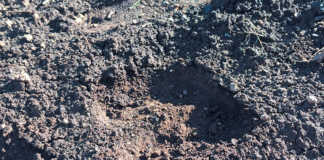Our main supply of fresh water comes from more than 500 dams or reservoirs that impound 50% of SA’s annual runoff – but there’s hardly anyone left who know how to manage these reservoirs properly, says Prof Rob Hart of the School of Biological and Conservation Sciences, University of KwaZulu- Natal.
He is co-author of Reservoirs and their Management, published by the Water Research Commission. He insists that scientifically-based, holistic management of existing reservoirs has become critical. “If that does not happen, the availability of good-quality water will steadily diminish as the population grows and new developments in drainage basins create increasing pressure on the water stored in reservoirs. “Reservoirs will remain the vital storage vessels of our liquid gold. Given the huge loadings of all sorts of pollutants that reach these inland ‘lakes’ from river drainage basins and interfere with the biological interactions between bacteria, algae, zooplankton, fish and bottom- dwelling organisms that live in them, ongoing management is essential if we are to ensure water of reliable potable quality,” stresses. “At the same time, the detrimental effects of dams on the rivers they impound have to be managed optimally. Global warming is likely to worsen the situation, not only as a result of more severe water level fluctuations and increased water demand, but also because higher water temperatures will upset the dynamic ecological balance in the dams,” he warns.
SA at one time had proud teams of internationally- recognised aquatic scientists, collectively studying the physics, chemistry and biology of SA’s reservoirs. “There is now barely a handful of reservoir limnologists – scientists with contemporary understanding of reservoir science. Various water boards and some municipalities do employ hydrobiologists, but they are mostly technical appointments. It is the limnologists who understand the interrelationships between the physics (heating, temperature, water movements, underwater light), chemistry (dissolved salts and gases), and the organisms that inhabit the water.”
What went wrong?
Prof Hart says influential people, some with malevolent private agendas, used the entirely logical argument that rivers, not lakes, are SA’s natural inland water ecosystems, to redirect the focus of aquatic ecology into research on rivers. “Water bodies created by the absolutely vital storage dams were left in limbo with no coordinated strategic, investigative thrust. Since then, water quality in reservoirs has declined,” says Prof Hart.
Eutrophication – a global problem of nutrient enrichment has become prominent. This problem is exacerbated by the increasingly substandard, even dysfunctional sewage treatment works in SA municipalities – related to the attrition of skills and work ethics.” Warning that the management of reservoirs cannot be based on simplistic “quick-fix” options, Prof Hart says treat the primary causes, of which human population growth (and associated material consumption) is of driving importance. ”Reservoir management requires an integrated approach, reaching back into the catchment from where water drains. In principle, this is a strength of the proposed Catchment Management Associations. “Engineers alone are not equipped and cannot deal with all the emerging problems, at least not economically. Water quality is, and will remain, largely a biological phenomenon.
As a dry country, much greater attention must be given to valuing water appropriately. The 1998 Water Act has started to try and control ‘demand’ for water rather than to meet the endless calls for more ‘supply’. Management of demand/supply dynamics will be crucial,” says Prof Hart. Apart from the obvious functions of reservoirs, these freshwater bodies are likely to generate greater public awareness of their importance if their recreational value is promoted. “Also, it’s easy to forget that most impoundments are small farm dams. Their potential role as pre-impoundments to major reservoirs warrants special attention,” he says. |fw
The problems limnologists grapple with
Since the first half of the 20th century, more than 45 000 large dams have been built in over 140 countries. While fewer are being built now, the World Commission on Dams has suggested that a resurgence in dam construction might be inevitable as the world’s water requirements escalate. According to Prof Rob Hart’s report submitted to the World Commission on Dams, managing such dams in a developing world seems every bit as complicated as building them. Eutrophication, salinisation, and siltation are some of the main problems encountered by most countries.
Eutrophication, which is the enrichment of water bodies with plant nutrients – typically nitrogen and phosphorus – and the subsequent effects on water quality and biological structure and function, can be managed by manipulating the food chain. By maintaining low feeding pressure on zooplankton by fish, phytoplankton are kept under control. But this principle, sound in theory, faces various practical limitations in SA reservoirs. Manipulating river flow is adding to salinisation in some areas, but irrigation and mining are the main culprits.
For example, 60% of the salt load entering the Vaal Barrage is produced by only four mines. The result is an overall decrease in biodiversity. Solution: integrated catchment management aimed at preventing further salinisation. Sudden loss of the world’s reservoir capacity would be catastrophic, yet gradual loss due to sedimentation receives little attention. The fact is that the average age of the world’s man-made storage reservoirs is only 22 years. As sediment is also the major carrier of pesticides and other pollutants, sediment inflow must be reduced by soil conservation measures, revegetation and upstream sediment-trapping. Additional measures include partially emptying the reservoir during the flood season. This increases the flow velocity and reduces silt being deposited in the dam. Prof Hart says, ”A growing array of chemicals also impacts on inland waters, and on the health of humans reliant on this water. Insidious endocrine- disrupting chemicals pose a threat that escalates with the growing arsenal of new organic compounds, especially agrochemicals, that reach watercourses.













